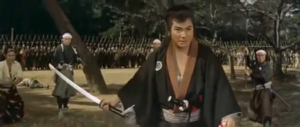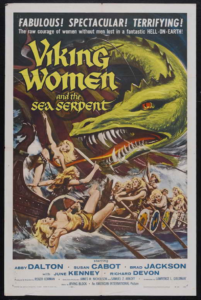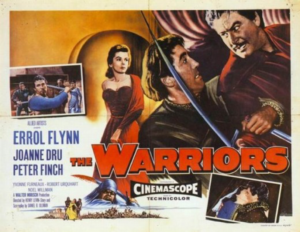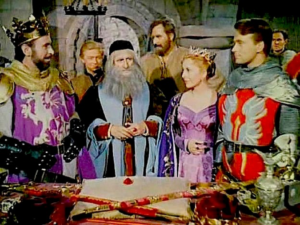Samurai Vendetta aka Hakuoki
Samurai Vendetta aka Hakuoki
Rating: **
Origin: Japan, 1959
Director: Kazuo Mori
Source: AnimEigo DVD

Some regard Kazuo Mori’s tale of a tragic love triangle as a masterpiece of samurai cinema, but I’m not among them. I find Mori’s direction pretentious and haphazard, compelling in one scene and then awkward in the next. The visual style switches from natural to impressionistic and overwrought without warning, which is jarring rather than emphatic. And there’s an over-reliance on narrative voiceovers to more the plot forward or tell us what the characters are feeling when a well-acted dialogue scene would do the job better. That said, with dialogue like, “Ours is a twisted world of warring titans,” maybe we’re better off with the voiceovers.
The film nonetheless has several points of interest. First of all, it’s a prequel of sorts to the Japanese national epic of Chushingura, or the Forty-Seven Ronin, telling the backstory of one of those famous martyrs to the samurai warrior code. Raizo Ichikawa does a fine job as the first male lead in the role of Tangé Tenzen, a dishonored fencing instructor forced to separate from his wife. Even more interesting is the second male lead, one of the forty-seven named Yasubei who’s played by a very young Shintaro Katsu, years before his international stardom as Zatoichi, the Blind Swordsman. Katsu has the best fencing moves in the picture, plus he gets to weep in the rain and be the only survivor of a scene of horrific slaughter—good training for the future Zatoichi.


